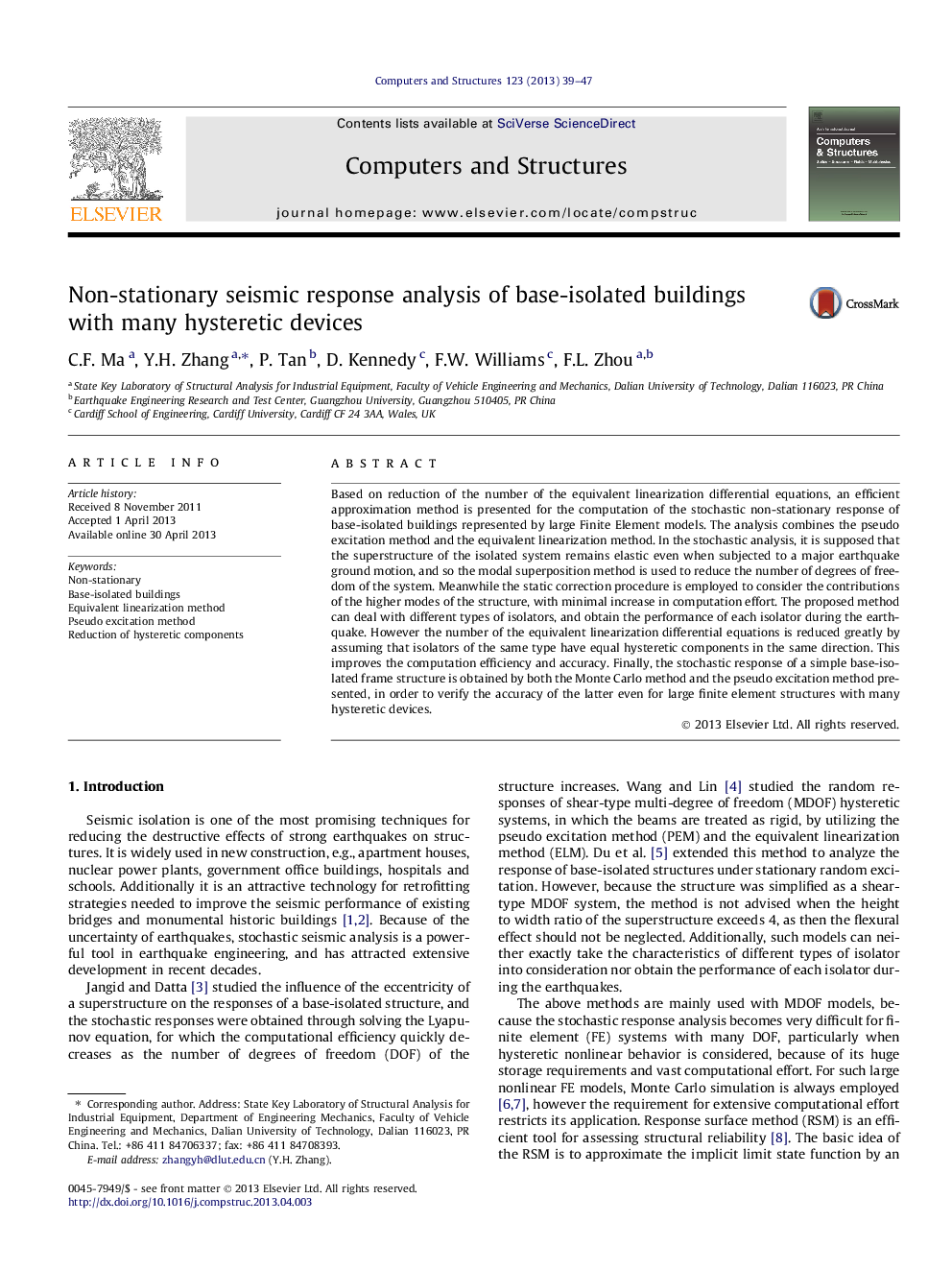| Article ID | Journal | Published Year | Pages | File Type |
|---|---|---|---|---|
| 510386 | Computers & Structures | 2013 | 9 Pages |
•Present a method for analyzing the stochastic response of 3D base-isolated buildings.•It can decrease the number of the equivalent linearization differential equations.•The performance of each isolator (with different types of isolator) is obtained.
Based on reduction of the number of the equivalent linearization differential equations, an efficient approximation method is presented for the computation of the stochastic non-stationary response of base-isolated buildings represented by large Finite Element models. The analysis combines the pseudo excitation method and the equivalent linearization method. In the stochastic analysis, it is supposed that the superstructure of the isolated system remains elastic even when subjected to a major earthquake ground motion, and so the modal superposition method is used to reduce the number of degrees of freedom of the system. Meanwhile the static correction procedure is employed to consider the contributions of the higher modes of the structure, with minimal increase in computation effort. The proposed method can deal with different types of isolators, and obtain the performance of each isolator during the earthquake. However the number of the equivalent linearization differential equations is reduced greatly by assuming that isolators of the same type have equal hysteretic components in the same direction. This improves the computation efficiency and accuracy. Finally, the stochastic response of a simple base-isolated frame structure is obtained by both the Monte Carlo method and the pseudo excitation method presented, in order to verify the accuracy of the latter even for large finite element structures with many hysteretic devices.
